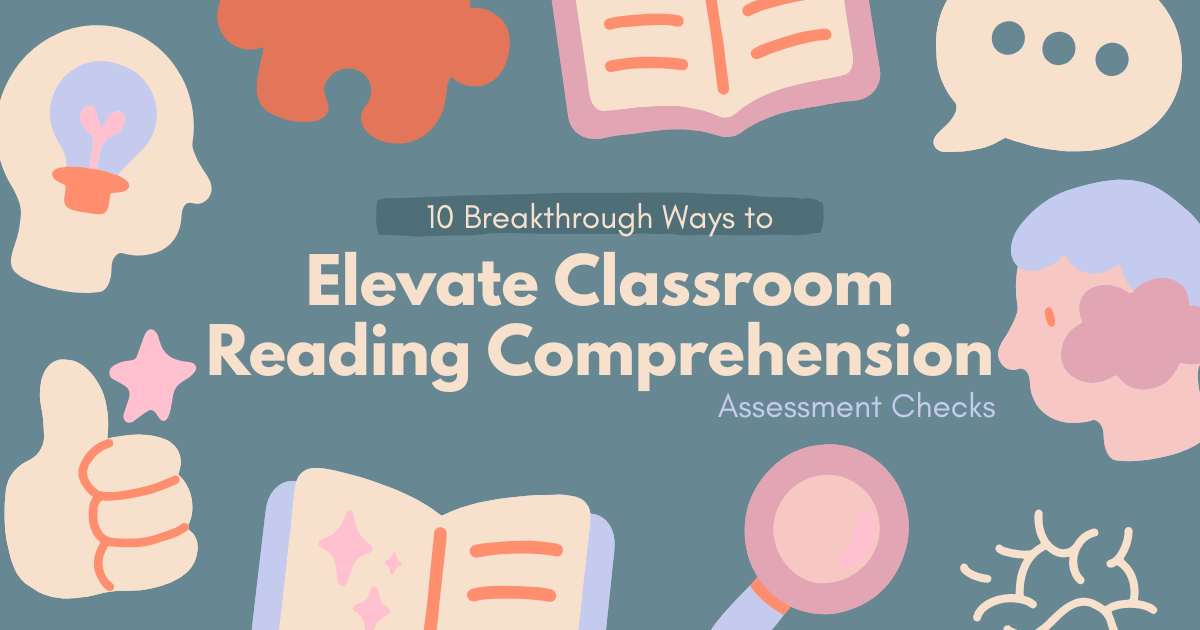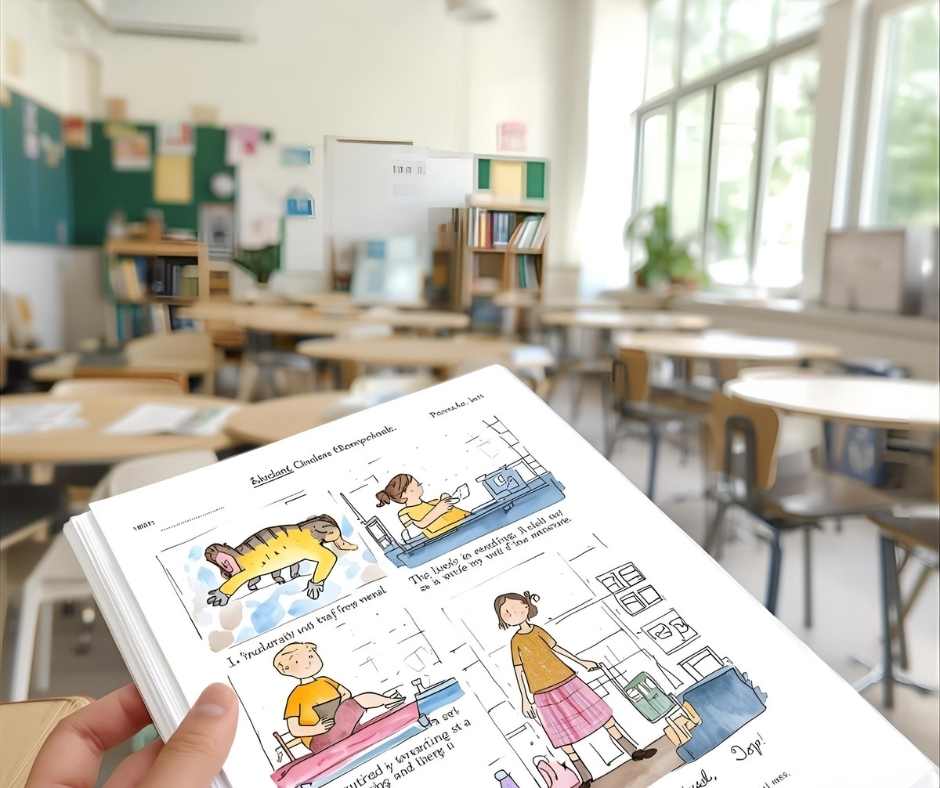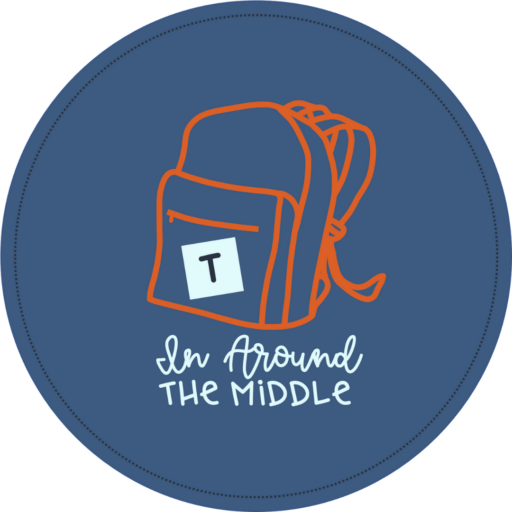10 Breakthrough Ways to Elevate Classroom Reading Comprehension Assessment Checks
Mid-Semester Classroom Check-ins Without the Stress

Mid-semester is often the time when teachers start to worry: Are my students really getting it? Traditional reading comprehension assessment usually means long, formal tests—but those can quickly drain the joy out of reading. The truth is, you don’t need standardized-style tests to understand where your students are as readers. Engaging, authentic, and even fun approaches to classroom reading comprehension checks can give you a clear picture of learning without the stress.

Rethinking Reading Comprehension Assessment
A strong reading comprehension assessment should do two things:
- Provide insight into whether students are grasping key ideas, themes, and skills.
- Motivate students to continue engaging with texts.
Traditional tests often miss the second part. They measure recall, but they don’t always capture thinking, creativity, or deeper understanding. That’s why mid-semester check-ins are a great chance to shift toward formative, student-centered practices that celebrate growth instead of focusing only on scores.
Quick and Joyful Classroom Reading Comprehension Assessment Checks
There are countless ways to keep a pulse on your students’ reading without turning to bubble sheets. These ideas are low-stakes, quick to implement, and actually enjoyable for students:
Comprehension Traffic Lights
Have students hold up a green, yellow, or red card to show if they feel confident, unsure, or confused about what they just read. It’s a quick visual classroom reading comprehension check that keeps students honest without pressure.
Exit Tickets with a Twist
Simple prompts like “What surprised you most in today’s reading?” or “What’s one question you’d like to ask a character?” make great formative tools. For inspiration, I’ve shared some of my favorite strategies in this post: Simple ELA Exit Ticket Ideas That Make a Big Difference.
Partner Share-Outs
Pair students and have them explain the chapter’s main conflict or theme to each other. Peer conversations often reveal comprehension gaps or insights more naturally than a test.

Sketch-to-Stretch
Invite students to illustrate a key theme, turning point, or character emotion. You’ll quickly see who’s picking up on subtleties and who’s missing the bigger picture.
One-Minute Write-Ups
Give students 60 seconds to jot down the most important idea from the day’s reading. It’s fast, reflective, and helps you check comprehension in real time.
Character Twitter Posts
Ask students to write a 140-character “tweet” from a character’s point of view at a key moment. It’s short, creative, and reveals understanding of perspective and tone.
Beyond the Test – Creative Alternatives That Go Deeper
Some of the best reading comprehension assessments are the ones that invite students to make connections and think critically. Two of my favorite tools are:
Novel Study Escapes
Escape-room style challenges let students demonstrate comprehension through problem-solving and collaboration. They’re exciting, rigorous, and test understanding in ways that go far beyond multiple-choice questions. You can explore my collection of Novel Study Escape Rooms here.

Hexagonal Thinking
Students connect ideas, characters, and themes on hexagons, building a web of understanding that’s far richer than a quiz score. You can grab my free Hexagonal Thinking Assessment Template to try it out in your classroom. Not sure how to assess hexagonal thinking? Check out this post. If you want to design your own, I’ve written a full guide here: The Stress-Free Way to Create a Powerful Hexagonal Thinking Template.
And if time is short? You can skip straight to my ready-made Novel Study Hexagonal Thinking resources.
Keeping Reading Comprehension Assessment Student-Centered
The best comprehension checks give students choices in how they show what they know. Here are some ways to keep things student-centered:
- Offer options: written reflection, illustration, or partner discussion.
- Let students self-assess by answering: What part of today’s reading challenged me the most? What part felt easy?
- Encourage portfolio collections—students gather their best comprehension responses across the term, showing growth in multiple formats.
Practical Tips for Teachers
- Focus on growth. Make mid-semester check-ins about reflection and improvement, not just accountability.
- Keep it short. Quick responses are often more authentic than lengthy tests.
- Mix it up. Use a variety of methods to capture different strengths—visual, verbal, and written.
Final Thoughts
Reading comprehension assessment doesn’t have to feel like a test—it can be engaging, flexible, and even fun. With exit tickets, creative check-ins, hexagonal thinking, and novel study escapes, you can gather meaningful data while keeping students motivated and joyful about reading.
Want to save time with ready-made tools? Grab my Hexagonal Thinking Assessment freebie.
Your students’ understanding is worth measuring—but how you measure it can make all the difference.
Happy teaching






